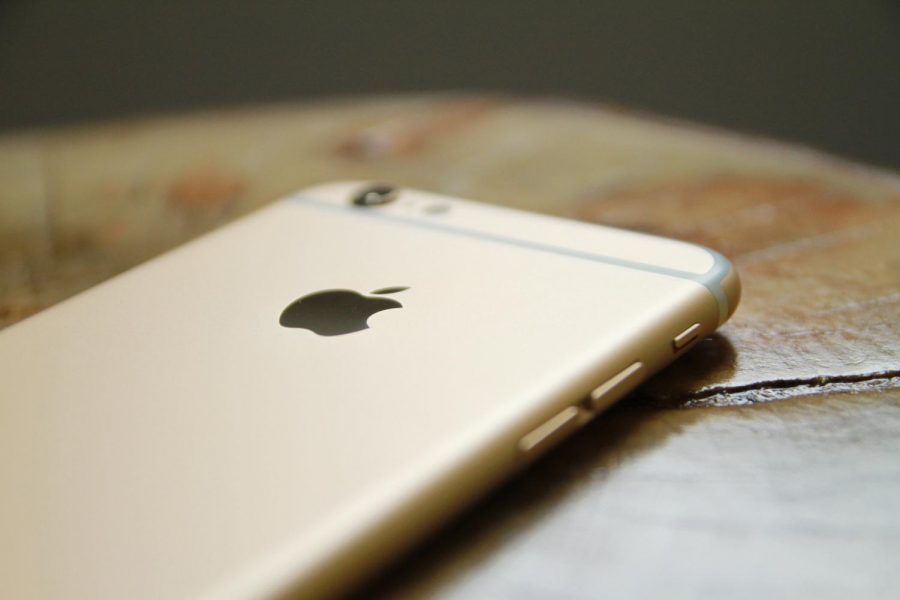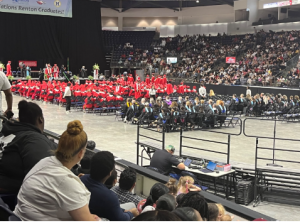A tired generation of tablet and Iphone users
March 4, 2019
As of today, “…88 percent of teenagers, ages 13 to 17 have or have access to a cellphone. While 91 percent of teenagers, ages 13 to 17, access the internet on cell phones, tablets and other mobile devices at least occasionally,” showed statistics found by the Growing Wireless website.
This is staggering compared to the research done by the Pew Research Center, a non-partisan website that covers a variety of issues in the U.S., that showed the dramatic rise in technical usages in past years.
“The Project first began surveying teenagers about their mobile phones in its 2004 Teens and Parents project when a survey showed that 45% of teens had a cell phone. Since that time, mobile phone use has climbed steadily among teens ages 12 to 17 – to 63% in fall of 2006 and then to 71% in early 2008…” stated the Pew Research Center website.
A lot of analysis has been done to justify the technical qualities and abilities given to the younger generation by technology, while others work to combat the social disservice and learning drawbacks that come with it.
One includes the important topic of brain development and learning curves. Some argue that giving children under the age of 5 access to a tablet or phone will stunt their creative and imaginative qualities. Though as it applies to later learning, at a secondary and third level, technology has been openly welcomed as a side-by-side learning tool for teachers.
Our very own Renton High School integrated Chromebooks fall of 2018 and has found much success in the switch. Students are encouraged daily to be independent in their learning, use their time wisely, and stay caught up with assignments online.
This is also why we’ve seen an upward trend in school presentations and learning activities involving cyberbullying awareness and digital footprints. Though it is important to note that the laptops were purchased by a Voter-Approved Technology Levy, meaning many voters in the area approved of the integration.
With many schools taking this leap, it makes one wonder, when aren’t young people using technology?
It seems from the moment they wake up to an alarm on their phone at 6:00am, followed by work on laptops in almost every class, phone time at lunch, and watching TV at home, students are seemingly lost without 24/7 connection to the web.
We knew that brain receptors’ respond to the bright screen, while in dark lit rooms, and unconsciously keep your body from realizing how late at night it is. But it turns out, phone usage is actually the most problematic habit, when it comes to trying to get a full night’s sleep.
For one, they keep your brain going, unable to easily shutdown. By keeping one interested in its capabilities, and engaged fully in web surfing, it subconsciously tells their brain to stay alert. This means when one closes their eyes and brainstorm while falling asleep, they are reminded of something they need to do or research for a few more minutes. This unhealthy and reoccurring reach for the phone, often leads to an extensive period of unrest, resulting in a loss of sleep.
So, given that sleep deprivation is widely concerned with and among teenagers and high-schoolers, giving up all means of technology 30 min before bed might drastically increase one’s restfulness.
The blue tone screen light on a phone also has research stating it’s significant and harmful effect on users.
Robert Glatter, a writer for Forbes, wrote an informative article on the effects of Blue Light Transmitted from cellphones. His discovery was quite shocking.
“Laptops, smartphones, ipads and e-readers all transmit blue light which is toxic to specialized cells known as photoreceptors located in the retina, and responsible for our vision— Results of new research from the University of Toledo now point to a specific way in which blue light emitted from electronic devices has the potential to lead to macular degeneration, a major cause of vision loss throughout the U.S.,” collected Glatter.
Now this is a scary thought, especially since according to Common Sense Media, teenagers 13-19 spend an average of 9 hours online in a day, followed by 8-12 year olds who spend around 6 hours.
As far as preventing trauma to young eyes, keeping track of how many hours your generally online, can be beneficial in changing habits. IPhones with the newer updates have the “Screen-Time,” feature in settings where your activity can be monitored throughout the week. It also breaks down the categories where you spent your time, whether on Social Media, Reading and Reference or others.
But the most important thing about changing unhealthy relationships with technology, outside of school, is to make oneself aware of how it effects ones life. Seek to change anti-social ways, and put the phone down while spending time with loved ones. Remember your safety too, crossing the street while looking down is hazardous, so do not, and deem the screen light/tone on phones to hopefully prevent loss of sight.
Sources
https://money.cnn.com/2018/06/25/technology/iphone-screen-time-test/index.html
https://www.preventblindness.org/blue-light-and-your-eyes







